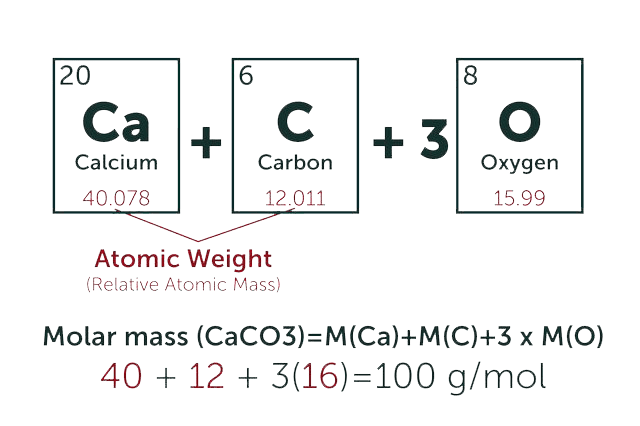Nisin A
* Please be kindly noted products are not for therapeutic use. We do not sell to patients.

| Category | Antibiotics |
| Catalog number | BBF-03772 |
| CAS | 1414-45-5 |
| Molecular Weight | 3354.07 |
| Molecular Formula | C143H230N42O37S7 |
Online Inquiry
Capabilities & Facilities
Fermentation Lab
4 R&D and scale-up labs
2 Preparative purification labs
Fermentation Plant
Semi pilot, pilot and industrial plant 4 Manufacturing sites 7 Production lines at pilot scale 100+ Reactors of 30-4000 L; 170+ reactors of 20 KL-30 KL; 24+ reactors of >100 KL 2 Hydrogenation reactors (200 L, 4Mpa and 1000L, 4Mpa)
Product Description
Nisin A is a polycyclic antibacterial peptide produced by the bacterium Lactococcus lactis that is used as a food preservative.
- Specification
- Properties
- Reference Reading
- Price Product List
- QC Data
| Synonyms | L-Isoleucyl-(Z)-2,3-didehydro-2-aminobutanoyl-D-cysteinyl-L-isoleucyl-2,3-didehydroalanyl-L-leucyl-L-cysteinyl-threo-3-mercapto-D-2-aminobutanoyl-L-prolylglycyl-L-cysteinyl-L-lysyl-threo-3-mercapto-D-2-aminobutanoylglycyl-L-alanyl-L-leucyl-L-methionylglycyl-L-cysteinyl-L-asparaginyl-L-methionyl-L-lysyl-threo-3-mercapto-D-2-aminobutanoyl-L-alanyl-threo-3-mercapto-D-2-aminobutanoyl-L-cysteinyl-L-histidyl-L-cysteinyl-L-seryl-L-isoleucyl-L-histidyl-L-valyl-2,3-didehydroalanyl-L-lysinecyclic(3->7),(8->11),(13->19),(23->26),(25->28)-pentakis(sulfide); Ile-Abu-d-Cys-Ile-Ala-Leu-Cys-d-Abu-Pro-Gly-Cys-Lys-d-Abu-Gly-Ala-Leu-Met-Gly-Cys-Asn-Met-Lys-d-Abu-Ala-d-Abu-Cys-His-Cys-Ser-Ile-His-Val-Ala-Lys (Disulfide bridge: Cys3-Cys7, Abu8-Cys11, Abu13-Cys19, Abu23-Cys26, Abu25-Cys28) |
| Sequence | I-Abu-d-Cys-IALC-d-Abu-PGCK-d-Abu-GALMGCNML-d-Abu-A-d-Abu-CHCSIHVAK (Disulfide bridge: Cys3-Cys7, Abu8-Cys11, Abu13-Cys19, Abu23-Cys26, Abu25-Cys28) |
| Storage | Store at -20°C |
| IUPAC Name | (2S)-6-amino-2-[2-[[(2S)-2-[[(2S)-2-[[(2S,3S)-2-[[(2S)-2-[[(1R,4S,7R,11R,14S,17R)-7-[[(2S)-6-amino-2-[[(2S)-2-[[(2S)-4-amino-2-[[(3R,9S,12S,15S,21S)-21-[[(2R)-6-amino-2-[[(3R,7R,13S)-3-[[(3R,6S,12S,15R)-15-[[(E)-2-[[(2S,3S)-2-amino-3-methylpentanoyl]amino]but-2-enoyl]amino]-12-[(2S)-butan-2-yl]-9-methylidene-6-(2-methylpropyl)-5,8,11,14-tetraoxo-1-thia-4,7,10,13-tetrazacyclohexadecane-3-carbonyl]amino]-4-methyl-2,9,12-trioxo-5-thia-1,8,11-triazabicyclo[11.3.0]hexadecane-7-carbonyl]amino]hexanoyl]amino]-15,22-dimethyl-12-(2-methylpropyl)-9-(2-methylsulfanylethyl)-5,8,11,14,17,20-hexaoxo-1-thia-4,7,10,13,16,19-hexazacyclodocosane-3-carbonyl]amino]-4-oxobutanoyl]amino]-4-methylsulfanylbutanoyl]amino]hexanoyl]amino]-14-(1H-imidazol-5-ylmethyl)-4,8,20-trimethyl-3,6,12,15,21-pentaoxo-9,19-dithia-2,5,13,16,22-pentazabicyclo[9.9.2]docosane-17-carbonyl]amino]-3-hydroxypropanoyl]amino]-3-methylpentanoyl]amino]-3-(1H-imidazol-5-yl)propanoyl]amino]-3-methylbutanoyl]amino]prop-2-enoylamino]hexanoic acid |
| Canonical SMILES | CCC(C)C1C(=O)NC(=C)C(=O)NC(C(=O)NC(CSCC(C(=O)N1)NC(=O)C(=CC)NC(=O)C(C(C)CC)N)C(=O)NC2C(SCC(NC(=O)CNC(=O)C3CCCN3C2=O)C(=O)NC(CCCCN)C(=O)NC4C(SCC(NC(=O)CNC(=O)C(NC(=O)C(NC(=O)C(NC(=O)CNC4=O)C)CC(C)C)CCSC)C(=O)NC(CC(=O)N)C(=O)NC(CCSC)C(=O)NC(CCCCN)C(=O)NC5C(SCC6C(=O)NC(C(=O)NC(CSC(C(C(=O)N6)NC(=O)C(NC5=O)C)C)C(=O)NC(CO)C(=O)NC(C(C)CC)C(=O)NC(CC7=CN=CN7)C(=O)NC(C(C)C)C(=O)NC(=C)C(=O)NC(CCCCN)C(=O)O)CC8=CN=CN8)C)C)C)CC(C)C |
| InChI | InChI=1S/C143H230N42O37S7/c1-24-69(11)105(148)135(213)162-82(27-4)118(196)174-94-58-225-59-95(175-123(201)89(48-67(7)8)169-115(193)74(16)158-138(216)107(70(12)25-2)180-132(94)210)133(211)184-112-79(21)229-61-96(160-104(190)56-152-134(212)100-38-34-44-185(100)142(112)220)128(206)164-84(36-29-32-42-145)120(198)182-109-76(18)226-60-97(161-103(189)55-151-117(195)85(39-45-223-22)165-122(200)88(47-66(5)6)168-113(191)72(14)156-102(188)54-153-136(109)214)129(207)171-92(51-101(147)187)125(203)166-86(40-46-224-23)119(197)163-83(35-28-31-41-144)121(199)183-110-77(19)228-63-99-130(208)170-90(49-80-52-149-64-154-80)124(202)176-98(62-227-78(20)111(141(219)177-99)181-116(194)75(17)159-140(110)218)131(209)173-93(57-186)127(205)179-108(71(13)26-3)139(217)172-91(50-81-53-150-65-155-81)126(204)178-106(68(9)10)137(215)157-73(15)114(192)167-87(143(221)222)37-30-33-43-146/h27,52-53,64-72,75-79,83-100,105-112,186H,15-16,24-26,28-51,54-63,144-146,148H2,1-14,17-23H3,(H2,147,187)(H,149,154)(H,150,155)(H,151,195)(H,152,212)(H,153,214)(H,156,188)(H,157,215)(H,158,216)(H,159,218)(H,160,190)(H,161,189)(H,162,213)(H,163,197)(H,164,206)(H,165,200)(H,166,203)(H,167,192)(H,168,191)(H,169,193)(H,170,208)(H,171,207)(H,172,217)(H,173,209)(H,174,196)(H,175,201)(H,176,202)(H,177,219)(H,178,204)(H,179,205)(H,180,210)(H,181,194)(H,182,198)(H,183,199)(H,184,211)(H,221,222)/b82-27+/t69-,70-,71-,72-,75-,76?,77?,78?,79?,83-,84+,85-,86-,87-,88-,89-,90-,91-,92-,93-,94-,95-,96-,97-,98-,99-,100-,105-,106-,107-,108-,109+,110-,111-,112-/m0/s1 |
| InChI Key | NVNLLIYOARQCIX-ILAIHEEGSA-N |
| Source | Lactococcus Lactis |
| Appearance | Off-white Powder |
| Application | Nisin is a natural antimicrobial peptide that has attracted great attention in the food industry and biotechnology due to its potent antimicrobial properties and versatility. This 34 amino acid peptide is produced by certain strains of lactic acid bacteria, particularly Lactococcus lactis subsp. nisin has been approved for use as a food preservative in many countries and is known for its ability to inhibit the growth of a wide range of Gram-positive bacteria, including foodborne pathogens such as Listeria monocytogenes and Staphylococcus aureus.
Food Preservation: Nisin is mostly utilized as a safe, natural preservative to increase the shelf life and safety of a variety of foods. It works well to prevent the formation of spoilage and pathogenic germs, which makes it a desirable substitute for artificial preservatives. Nisin can be applied topically to food packaging materials or added straight to food.
Applications in Biotechnology: Nisin has applications not just in food preservation but also in the biotechnology and pharmaceutical sectors. Nisin is a key element in the creation of antimicrobial agents for a range of applications due to its strong antibacterial capabilities. To stop infections on medical implants, catheters, and other equipment, antimicrobial coatings based on nisin can be used. Nisin is being researched in the pharmaceutical sector for its possible application in fighting bacteria that are resistant to drugs. Nisin is also utilized in biopreservation, a process that prolongs the shelf life of biomaterials including probiotics, enzymes, and vaccines by utilizing natural antimicrobials. Nisin can be added to biopreservative formulations to increase the products' stability and effectiveness.
Biomedical Applications: Nisin's antibacterial qualities have generated curiosity in its possible uses in biomedical studies. Research has demonstrated that nisin's ability to induce apoptosis in cancer cells demonstrates its anticancer efficacy. Nisin's anti-inflammatory qualities have also been researched in relation to the management of inflammatory bowel disease. |
| Antibiotic Activity Spectrum | Gram-positive bacteria |
| Boiling Point | 2966.8±65.0°C at 760 mmHg |
| Density | 1.4±0.1 g/cm3 |
| Solubility | Soluble in DMSO |
| BBF-05880 | N-Me-L-Ala-maytansinol | Inquiry |
| BBF-05843 | Bacitracin | Inquiry |
| BBF-03884 | Formononetin | Inquiry |
| BBF-00693 | Ansamitocin P-3 | Inquiry |
| BBF-02577 | Pneumocandin C0 | Inquiry |
| BBF-03709 | Nemadectin | Inquiry |
Bio Calculators
Concentration (start) x Volume (start) = Concentration (final) x Volume (final)
It is commonly abbreviated as: C1V1 = C2V2


